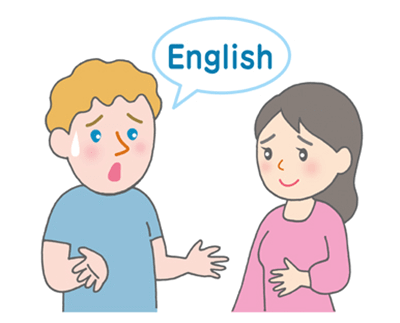Tam is eating lunch at her university's cafeteria. Another student, a Japanese woman, comes over and starts talking to her.






To make a request, use "[the TE-form of a verb] + kudasai." The TE-form is a conjugated verb that ends with "te" or "de." "Hanashite" is the TE-form of "hanasu" or "speak." Japanese verbs are categorized into three groups. Conjugation of the TE-form varies by group. How to make the TE-form: With Group 1 verbs, if the dictionary form ends with "‐(w)u," "‐t(s)u," or "-ru," change the ending to "-tte." For those ending with "-bu" or "-mu," change the ending to "-nde." Verbs that end with "-ku" or "-gu," are changed to "-ite" or "-ide." "Iku" meaning "to go" is an exception. Its ending becomes "itte." For verbs ending with "-su," change the "-su" to "-shite." With Group 2 verbs, change the ending of the dictionary form from "-ru" to "-te." As for Group 3's irregular verbs, "kuru" meaning "to come" becomes "kite." "Suru" meaning "to do" becomes "shite."





Use this when you can't understand what the speaker said to you. Putting "yoku" before "wakarimasen" or "don't understand" makes it more polite.

Popular Japanese dishes include nigirizushi, slices of raw fish on top of vinegared rice, and sukiyaki seasoned with soy sauce and sugar.
Rice is the staple food in Japan. People usually eat steamed rice with fish, meat, and vegetables. Miso soup or some other kind of soup often comes with the meal. Western dishes, such as spaghetti and stew, can be found everywhere.